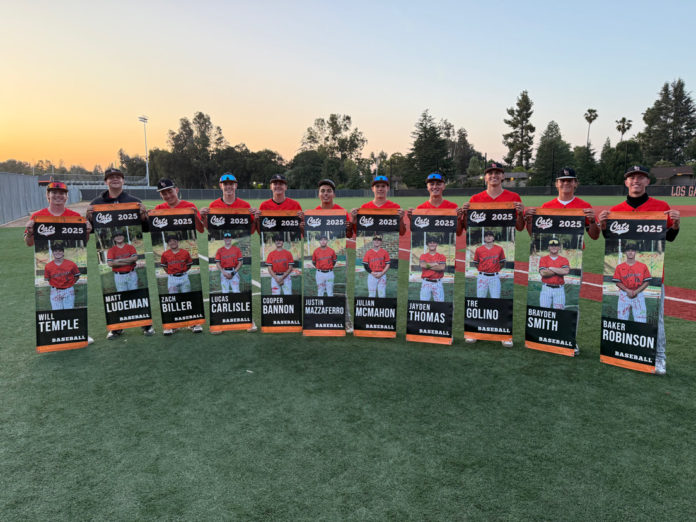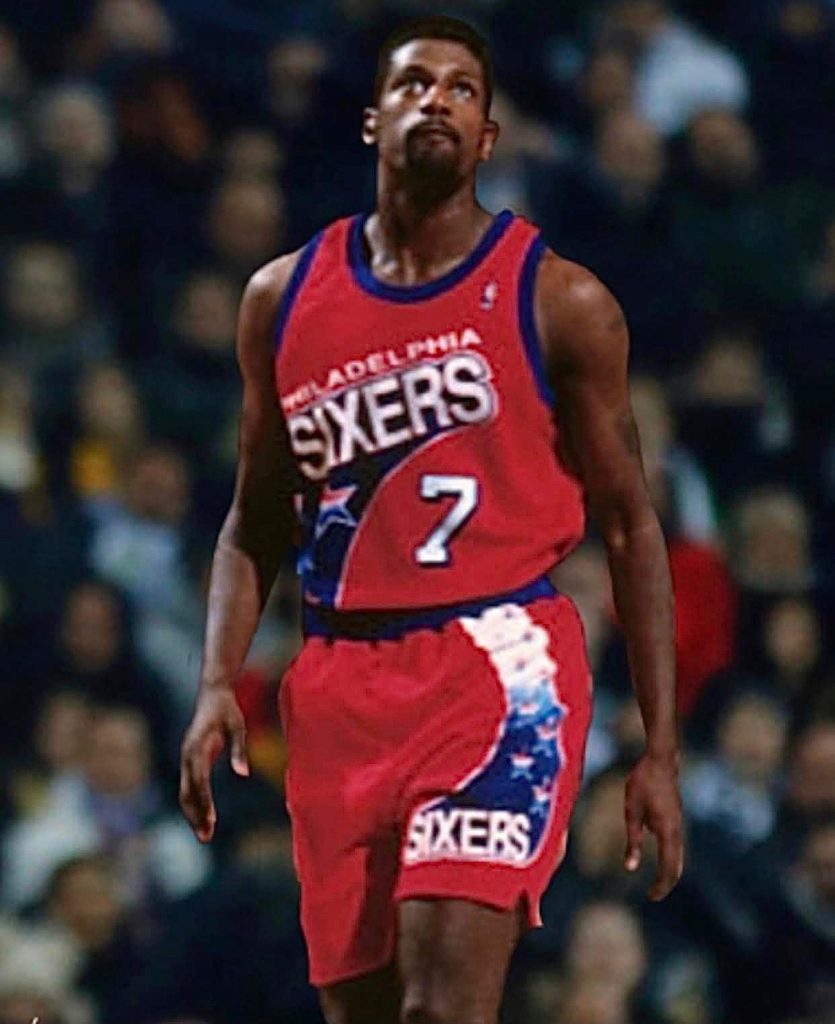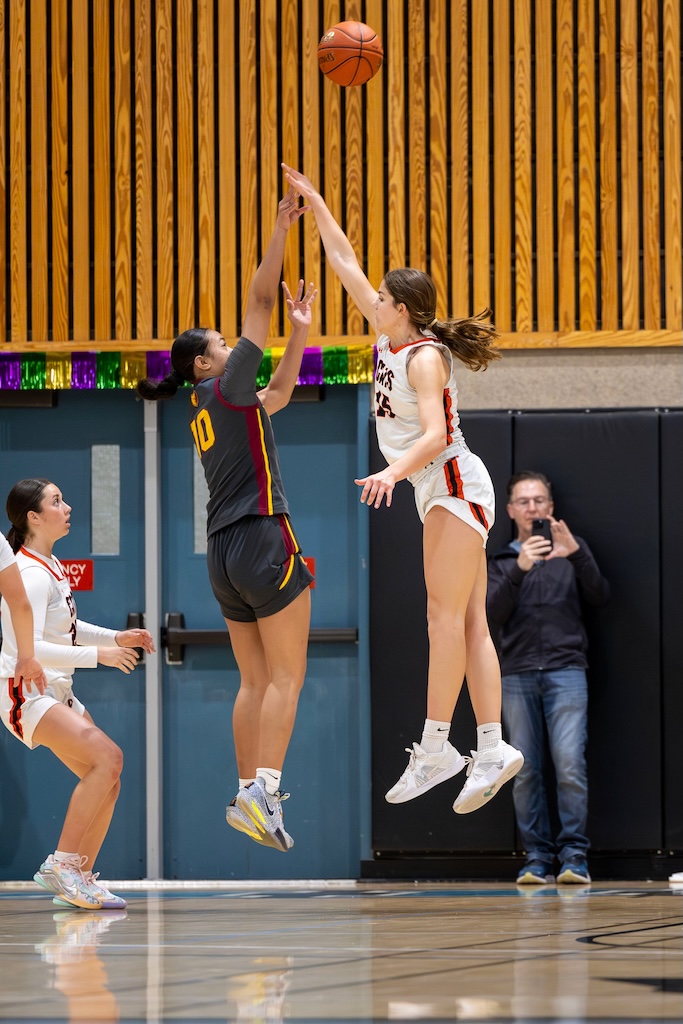
Back in the day, if you wanted to get exposure as a student athlete, you had to focus on attending camps and reaching to play in higher leagues.
But now, with the advent of social media—and the ability to craft your own platform at your fingertips—the game has changed.
Sean Green, 55-year-old ex-pro basketball player, was a Division 1 standout at North Carolina State and Iona University, who was drafted into the NBA by the Indiana Pacers. He spent four years in the league, going on to join the Philadelphia 76ers and the Utah Jazz. Then, he played in Europe for eight years. The Los Gatan asked him to reflect on his personal experience dealing with the media as he was coming up.
“There was no social media whatsoever,” he said. “To get the exposure you wanted, you had to be a good player who played for AAU programs and five star summer camps. All the college coaches would go to the camps.”

Without social media, you had to work harder to attract attention, since you had less opportunities to show-out in person, he explained.
Lisa Mitchell, the 48-year-old women’s soccer coach at Los Gatos High School, played Division 1 soccer at Santa Clara University.
“When I was getting exposure, I played club soccer,” she recalled. “College coaches reached out to both my high school and club coaches. And then, the coach came to a game in person. Social media did not even exist. There was Myspace, but that was it.”
While older generations had to find ways to break through into the traditional media channels, today’s crop of young athletes is living in a completely different reality. “I first started using Instagram and Snapchat in 6th or 7th grade, and downloaded TikTok in 2020,” said Nicole Steiner, a Los Gatos High School Class of 2025 graduate who excelled in three different sports. “I deleted TikTok over a year ago, and now use Snapchat and Instagram, mainly.” The volleyball, basketball and track athlete ultimately committed to a Division 1 program—Cal State Fullerton—to play basketball.
Matt Ludeman, also a Los Gatos High School class of 2025 grad, committed to play Division 1 baseball at the University of Pacific. Ludeman also played on the football team all four years at Los Gatos High School. “I started using social media around 12 or 13 years old,” he said. “The main platforms I use now are Instagram, Snapchat, TikTok and X. I use it now to really check in on news and sports.”
Ashley Larson, a Broadcast Journalism and Sports professor at San Francisco State University said, traditionally, media was all about one-way communication. Essentially, the industry would create content to send to consumers. “The audience had no way to talk back,” she said. “Social media made it so that we have two-way communication. One can create content, and anyone can reply or interact with it.” This was a game-changer for up-and-coming star athletes, who could now communicate back and forth with the targeted audience, which allowed more opportunities for these youth, both in athletics and academics, she added.
That’s something that Steiner knows first-hand. “I used Instagram as my volleyball account for a while,” she said, describing how expanding your digital footprint can lead to getting noticed by the decision-makers that matter. “After switching my focus from volleyball to basketball, I started to post my basketball highlights and send them to coaches. That is how the Fullerton coach found me. The coach then talked to my coach and saw me play in person.”
Social media comes with pluses and minuses for student athletes
Something similar happened with Ludeman. “I used X to put out highlights for baseball, which is how the University of Pacific found my baseball coach,” he said. “The coach came to one of my games and talked to me afterwards.” This is another good example of how creating a reliable social media profile as an athlete can help get you recruited and recognized more than in the past.
Larson, the media prof, says, in the past, it could be more difficult to get coaches to come out to your games. “With the use of social media, it has made it easier for athletes to build their own brand and platform, allowing these younger athletes to better connect with colleges and recruitment options,” she said, noting students have been given the power to highlight their best moments for the world.
However, Larson also points out that, along with the rise of social media, comes a new set of gender norms and stereotypes—especially on the sports media side of things. But, on the other hand, she adds, “Social media gives the opportunity to challenge stereotypes surrounding men, and female representation in sports,” she said. “This allows women to use strength, talent and skill to challenge gender norms, while males have the power to be more emotionally vulnerable and break the stereotype that men always need to be tough.”

(Jonathan Natividad / Los Gatan)
When considering how content is different for different genders on social media, Ludeman says he’s noticed some significant differences. “I think the biggest standout between male and female content is that females get more comments than males,” he said.
Green, the former NBA player, agrees. “I think women are definitely more sexualized and commented on than men when talking about athletics,” he said.
For her part, Steiner points to a slightly different aspect. “I think that guys’ social media pages get more views,” she said. “They get a lot more engagement and effort into their social media than females.”
Larson says it’s not just perception that young athletes of different genders can have vastly different experiences with social media. “We still are seeing female athletes being sexualized, and double standards being present—the idea that women need to look ‘glam’ and post lifestyle content, versus men who can post their athletics with no issue,” she said. “When posting these types of things, women get a lot of sexualized comments in comparison to men who get constant support.”
Despite these negatives, says Larson, you can’t deny the positives that have come along with the new media channels spawned in Silicon Valley. “Social media has really amplified the visibility of female athletes, giving them more opportunity for exposure and viewership, she said, adding this allows them to “bypass the traditional media that may not have covered them, and go straight to representing themselves in their sport.”










I am actually pitching to Los Gatos Baseball my College recruiting platform as I am also providing them other fundraising opportunities. I left the link of my platform below. I am hoping after I get the baseball team on the platform, I can get the rest of student athletes from LG. I have fundraising and also program for local business to donate to add their logos. Trying to make it free for the school!
Good luck!